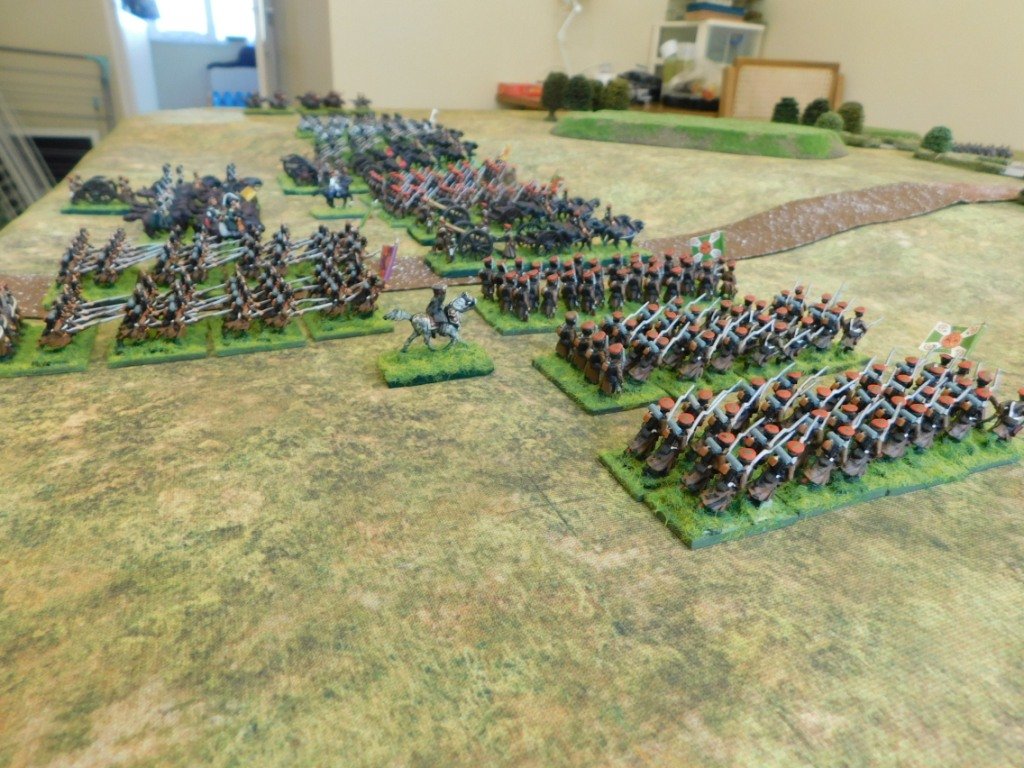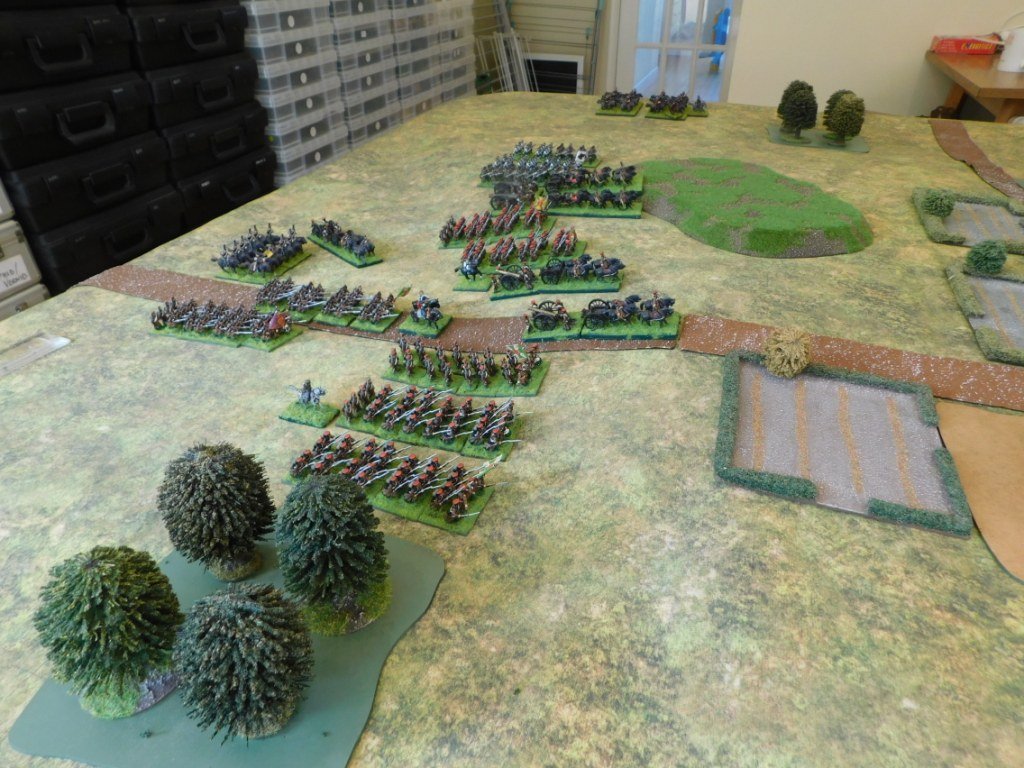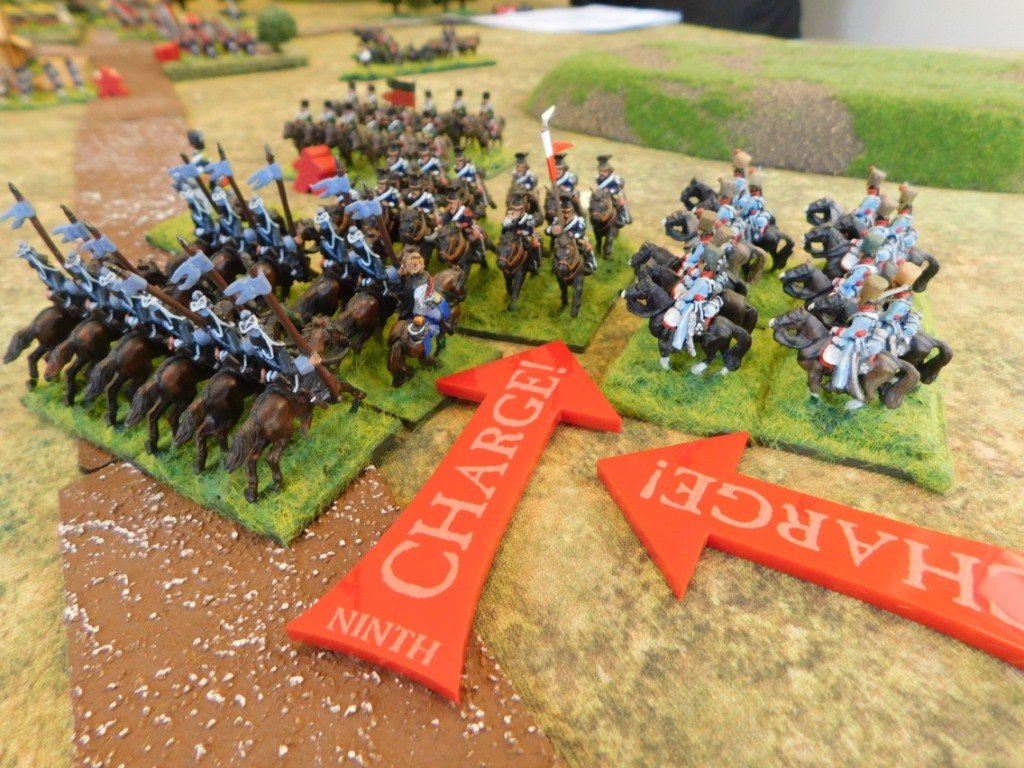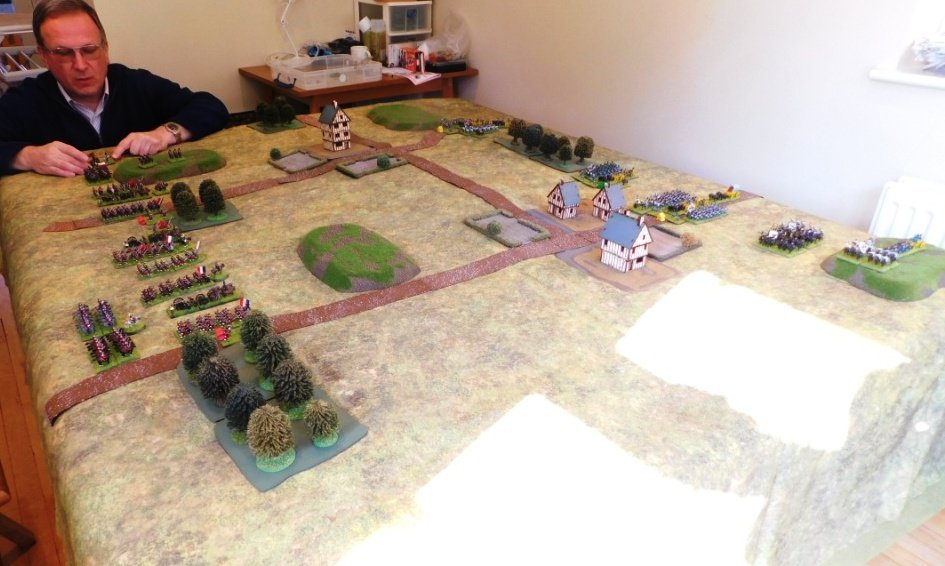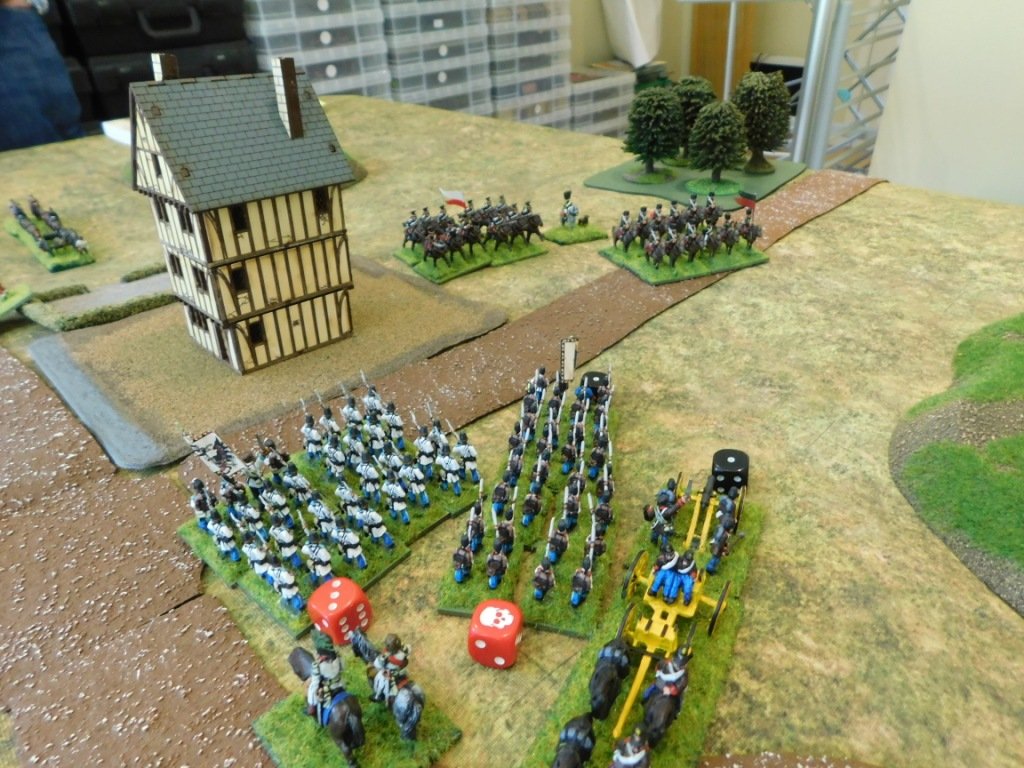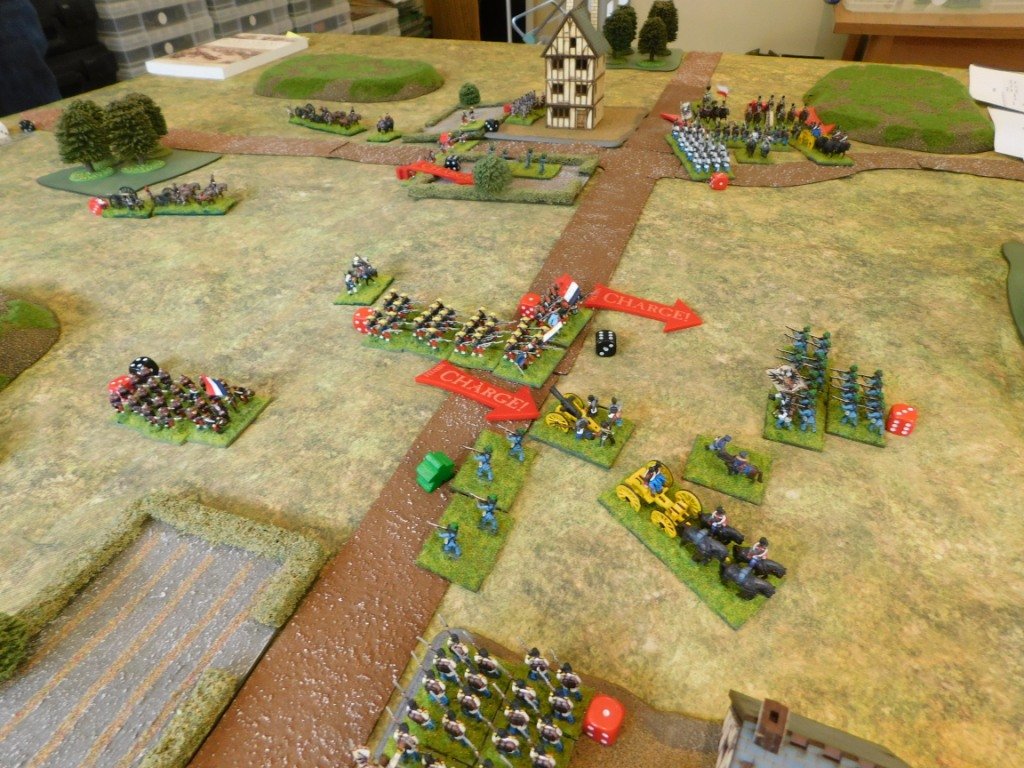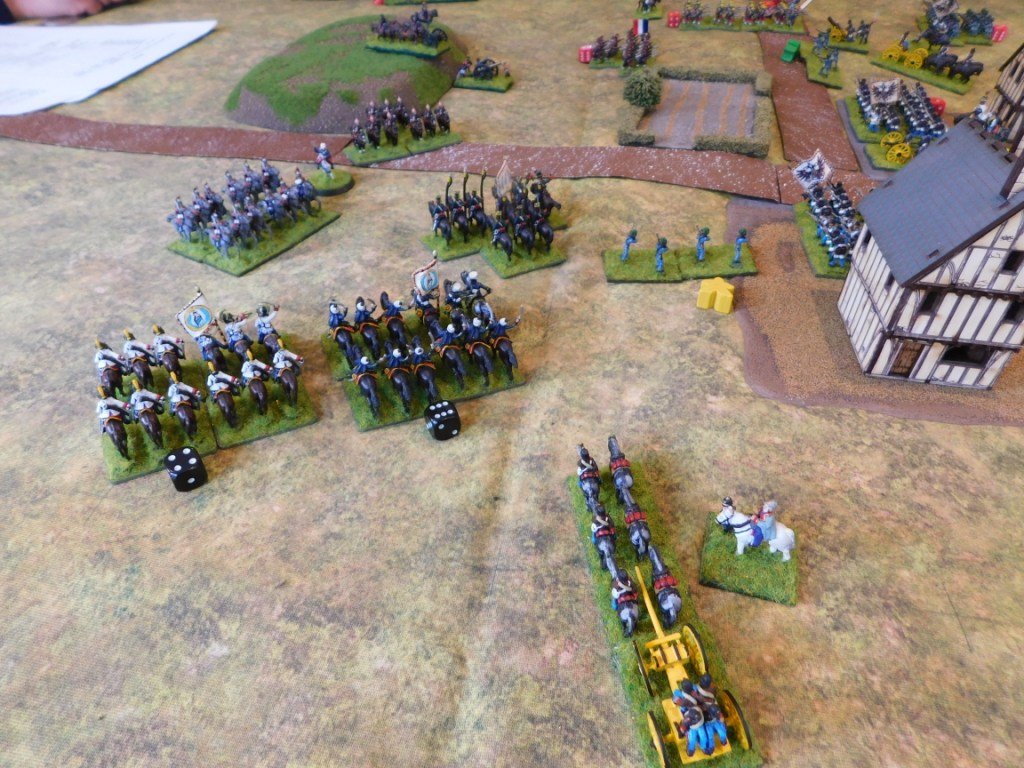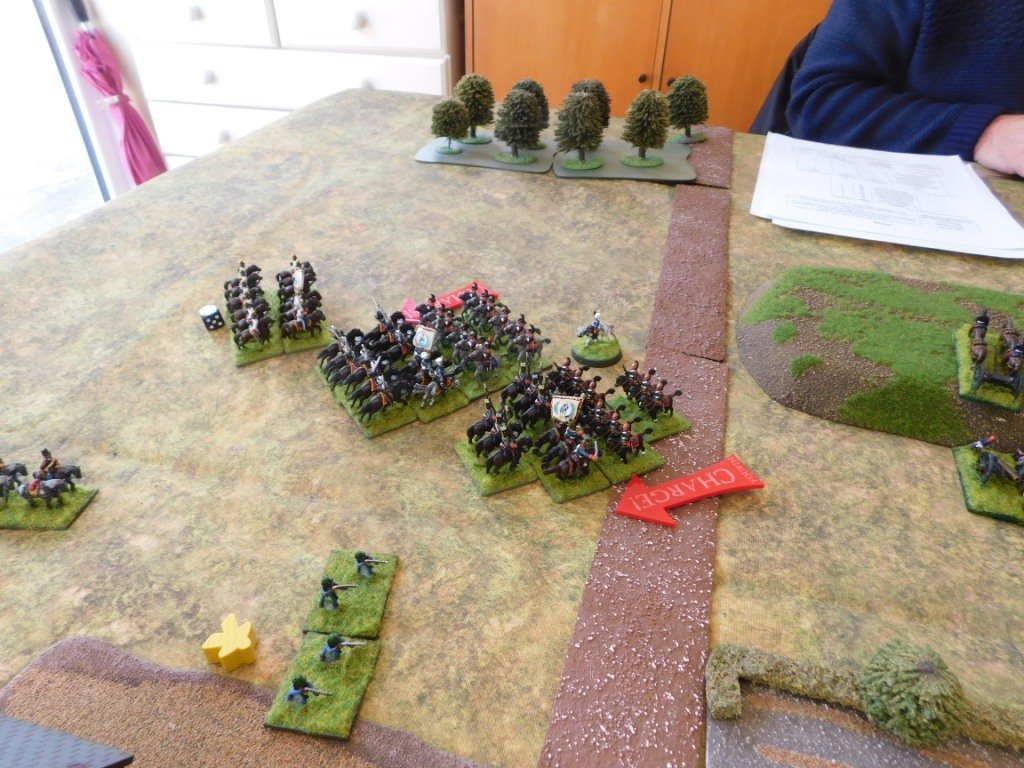19C AAR: Crimean War Clash
/Having re-based my Crimean Russian army a couple of weeks ago, it was now time to get them onto the tabletop. These figures had last seen action 23 years ago, so it was a real pleasure to wheel them out again and just proves my adage: never sell any figures, never give any away!
The game, using Neil Thomas’ Rules for 19th C Warfare, would therefore feature my Crimean Russians against John playing my Crimean French army in a fight for control of a strategically vital crossroads atop a ridge somewhere near Sebastopol.
Russians to the left, Frenchies to the right. The aim of the game was to take the crossroads in the middle of the table
As we wanted a big game and weren’t too bothered about making things fair, we fielded every figure that I had in the two armies concerned. This left the French pretty outnumbered, but with much better command and troops of generally better quality. The French could also form line for firing, unlike the Russians who were forced to stay in column throughout the game, and were armed with rifled muskets unlike the smoothbores of the Russians. Finally, the French could also field skirmishers (the Legere units) to harass the Russian columns as they advanced.
The Russians fielded four infantry divisions and a cavalry division for a total of ten infantry units, four cavalry units, five batteries of artillery and a couple of dubious looking sotnias of Cossacks.
The French fielded three infantry and one cavalry division for a total of six infantry units, three skirmisher units, four cavalry units and three artillery batteries.
So a hard fought victory for the Russians!
The French retreated in good order having lost all their skirmishers and half their line infantry. They managed to save two batteries of artillery, but lost most of their cavalry.
The Russians advanced to occupy the crossroads, but had lost half their infantry, half their artillery, half their cavalry and most of the Cossacks.
As the Russian commander, I knew my only route to a win was to just grind the French down, and grind them down I did.
John admitted that his infantry got bogged down in the fields and hedges near the town: his infantry mainly stayed static and tried to win by musket fire alone, which was a shame as every time the French attacked they smashed the Russian columns back. More elan needed next time!
The cavalry action on the Russian right was just a distraction: three units of Russians took care of two units of French, but hadn’t the strength to do much more. On the Russian left, the Cossacks were effectively wiped out by the French Guides, and it was again a shame that the French Cuirassiers had to be sacrificed in a vain attempt to stop the three columns of Russian infantry coming forward. At least they dies knowing that they gave the surviving French infantry in the centre time to retreat in good order!
All in all a cracking game!




